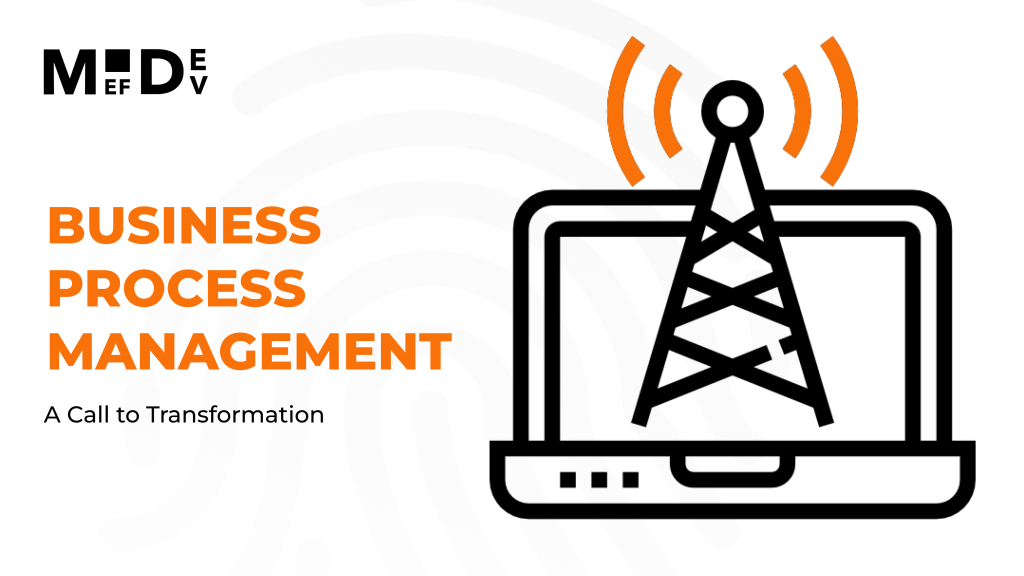
In the ever-evolving landscape of telecommunications, digital transformation is no longer a buzzword but a strategic necessity. At the heart of this transformative journey lies Business Process Management (BPM) – a dynamic approach that promises to redefine how telecom companies operate, innovate, and deliver value, while navigating the complexities of the modern business landscape.
Today, the telecommunications industry stands at the crossroads of an unprecedented digital revolution. The traditional communication models are rapidly giving way to a more interconnected and data-driven ecosystem. As consumer expectations evolve and technological advancements reshape the competitive landscape, telecom companies are recognizing the imperative to undergo a comprehensive digital transformation.
At the heart of this transformation is BPM, a strategic approach that focuses on optimizing and automating business processes to enhance efficiency, agility, and customer satisfaction. In the context of telecom, where the scale and complexity of operations are immense, BPM emerges as a guiding force that not only streamlines internal processes but also positions companies to harness the full potential of emerging technologies.
The Pillars of BPM in Telecom
BPM in telecom is more than a set of tools or technologies. It’s a holistic approach to managing and optimizing end-to-end business processes. Several key pillars underpin the application of BPM in the telecom industry:
1. Process Automation. Automation lies at the core of telecom. It translates into the seamless execution of repetitive tasks and workflows. Whether it’s order processing, billing, or network provisioning, automation reduces manual intervention, minimizes errors, and accelerates the pace of operations.
2. Enhanced Customer Experiences. Telecom companies are placing an increased emphasis on customer-centric processes. BPM enables the design and implementation of streamlined customer journeys, from onboarding to issue resolution. By leveraging data and analytics, companies can personalize interactions, anticipate customer needs, and deliver exceptional experiences.
3. Agile Operations. The telecom landscape is dynamic, with rapidly changing market conditions and technological advancements. BPM equips companies with the agility to adapt to these changes swiftly. Telecom operators can navigate challenges and prioritize opportunities in real time through flexible process design and continuous improvement methodologies.
4. Data-Driven Decision-Making. In the era of Big Data, leveraging information effectively is crucial. BPM facilitates data-driven decision-making by providing insights into operational performance, customer behaviors, and market trends. This enables telecom companies and industry vendors to make informed decisions that drive strategic initiatives and business growth.
BPM as a Digital Transformation Catalyst
Digital transformation in telecom is not a one-size-fits-all endeavor; it’s a journey that requires a nuanced and strategic approach. BPM serves as a compass, guiding telecom companies through this transformative journey. By reimagining and optimizing critical business processes, BPM becomes the driving force behind the integration of new technologies and the cultivation of a digital-first approach.
One of the major challenges in the telecom industry is the drastic complexity of operations. From network management to customer support, many processes intertwine to deliver seamless connectivity. BPM disentangles this complexity, providing a clear view of end-to-end processes and identifying areas for optimization and innovation.
Moreover, BPM acts as a bridge between legacy systems and emerging technologies. As telecom companies embrace the cloud, IoT, AI, and 5G, BPM ensures a cohesive integration of these technologies into existing processes. This not only protects stakeholders’ investments but also positions telco companies to unlock the full potential of their digital infrastructure and operational excellence. BPM, as a catalyst for digital transformation, impacts various facets of telecommunications, namely:
1. Through process optimization and automation, BPM eliminates bottlenecks and redundancies, resulting in significant efficiency gains. Technologically complicated tasks that once required months can be executed in several weeks, allowing teams of developers to focus on strategic initiatives rather than mundane operational tasks.
2. The efficiency brought by BPM translates into tangible cost reductions. Whether through the automation of billing processes, debt handling, or the optimization of network operations, telecom companies can realize substantial savings, improving their bottom line in an increasingly competitive and dynamic market.
3. New technologies, regulatory changes, and shifting consumer behaviors demand adaptability. BPM provides companies with flexible tools to quickly respond to these changes on the fly, ensuring they remain ahead of the curve in a rapidly evolving landscape.
The Future of Telecommunications
The ongoing and future success of telecom operations hinges on their ability to leverage BPM not as a mere tool but as a comprehensive and complex approach that shapes their digital future. The convergence of BPM with emerging technologies such as AI and 5G heralds a new era for the telecommunication industry. With BPM systems, communication service providers can gain new insights for making informed decisions that can be executed in real-time, contributing to a level of operational responsiveness.
The MEF.DEV company is bringing such a comprehensive BPM solution into play. The serverless open API integration MEF.DEV platform addresses modern telecom challenges, speeds up time-to-market, breaks the vendor lock-in, provides functionality for accelerated application development and enhancement, management, and hosting. Its powerful BPM and low-code capabilities open new horizons for modeling business processes and workflows of any complexity while accelerating product development and turning the platform into a robust digital transformation core.
With standardized APIs and container composition technology, the MEF.DEV platform empowers development teams with efficient tools for collaboration and versioning, thereby shortening the path from an idea to a product ready for market launch with a simultaneous reduction of integration and OpEx costs by 40%.
With BPM, telecom companies can not only adapt to the digital age but thrive in it. As the BPM technology orchestrates the digital evolution of telecom, it is laying the groundwork for a future of connectivity, efficiency, and intelligent experience.



 Sergej Polovnikov
Sergej Polovnikov